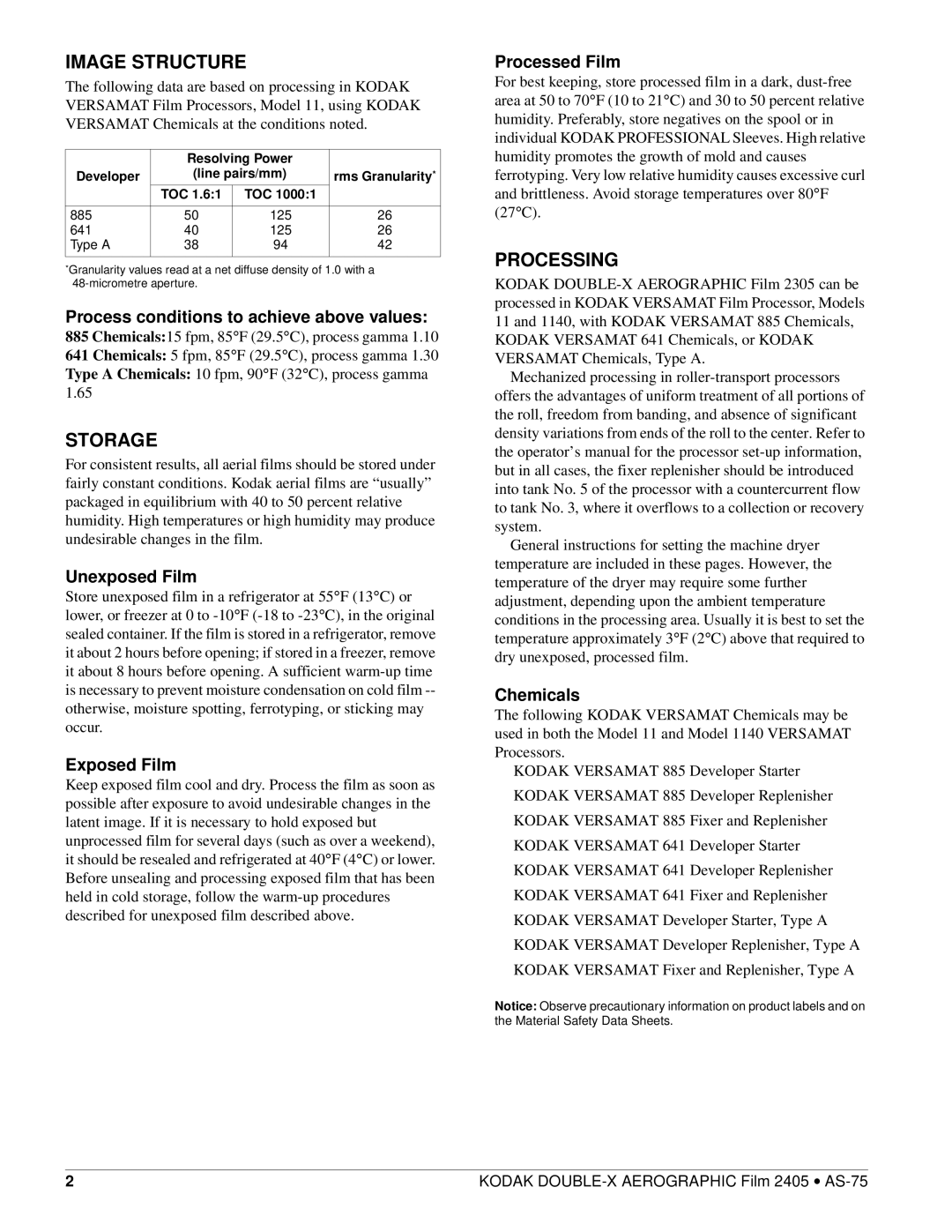IMAGE STRUCTURE
The following data are based on processing in KODAK VERSAMAT Film Processors, Model 11, using KODAK VERSAMAT Chemicals at the conditions noted.
| Resolving Power |
| |
Developer | (line pairs/mm) | rms Granularity* | |
| TOC 1.6:1 | TOC 1000:1 |
|
|
|
|
|
885 | 50 | 125 | 26 |
641 | 40 | 125 | 26 |
Type A | 38 | 94 | 42 |
|
|
|
|
*Granularity values read at a net diffuse density of 1.0 with a
Process conditions to achieve above values:
885Chemicals:15 fpm, 85°F (29.5°C), process gamma 1.10
641Chemicals: 5 fpm, 85°F (29.5°C), process gamma 1.30 Type A Chemicals: 10 fpm, 90°F (32°C), process gamma
1.65
STORAGE
For consistent results, all aerial films should be stored under fairly constant conditions. Kodak aerial films are “usually” packaged in equilibrium with 40 to 50 percent relative humidity. High temperatures or high humidity may produce undesirable changes in the film.
Unexposed Film
Store unexposed film in a refrigerator at 55°F (13°C) or lower, or freezer at 0 to
Exposed Film
Keep exposed film cool and dry. Process the film as soon as possible after exposure to avoid undesirable changes in the latent image. If it is necessary to hold exposed but unprocessed film for several days (such as over a weekend), it should be resealed and refrigerated at 40°F (4°C) or lower. Before unsealing and processing exposed film that has been held in cold storage, follow the
Processed Film
For best keeping, store processed film in a dark,
PROCESSING
KODAK
Mechanized processing in
General instructions for setting the machine dryer temperature are included in these pages. However, the temperature of the dryer may require some further adjustment, depending upon the ambient temperature conditions in the processing area. Usually it is best to set the temperature approximately 3°F (2°C) above that required to dry unexposed, processed film.
Chemicals
The following KODAK VERSAMAT Chemicals may be used in both the Model 11 and Model 1140 VERSAMAT Processors.
KODAK VERSAMAT 885 Developer Starter
KODAK VERSAMAT 885 Developer Replenisher
KODAK VERSAMAT 885 Fixer and Replenisher
KODAK VERSAMAT 641 Developer Starter
KODAK VERSAMAT 641 Developer Replenisher
KODAK VERSAMAT 641 Fixer and Replenisher
KODAK VERSAMAT Developer Starter, Type A
KODAK VERSAMAT Developer Replenisher, Type A
KODAK VERSAMAT Fixer and Replenisher, Type A
Notice: Observe precautionary information on product labels and on the Material Safety Data Sheets.
2 | KODAK |
